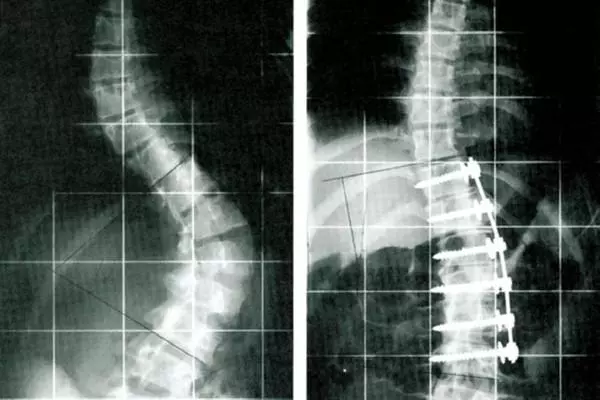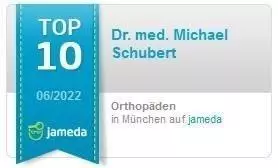Quick overview :
Spinal fusion - what is it?
Scoliosis surgery is a serious and irreversible procedure. A correction and simultaneous stiffening (fusion, spondylodesis) of the deformed section of the spine occurs here. This intervention can be carried out either from behind (dorsal) or from the front (ventral), in rare cases combined.
After such a stiffening operation, the path to other surgical and non-surgical treatment methods is blocked forever and should therefore always be viewed as the last possible step if all non-surgical methods have failed and/or there is no prospect of success using conservative methods.
A spinal fusion (fusion and/or stiffening operation) should always be considered the last step, as this is an irreversible surgical procedure.
From a purely technical point of view, screws are inserted into the vertebrae and then connected to a rod. The aim is to achieve an absolute restriction of movement (stiffening) in the operated spinal segment through fixation. State of the art today is the additional ventral (front) support and stiffening by introducing cages (placeholders made of titanium, carbon, PEEK, etc. materials).
The success rate for such stiffening operations is given very differently in the literature, it is estimated at 85%.
Do you have any complaints?
Then use our online questionnaire - professional initial assessment in 48 hours
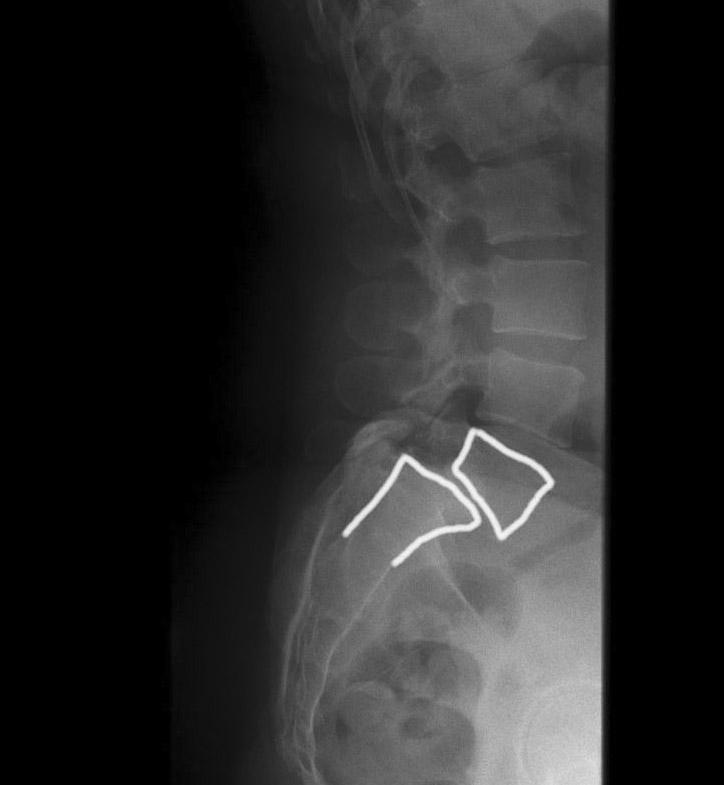 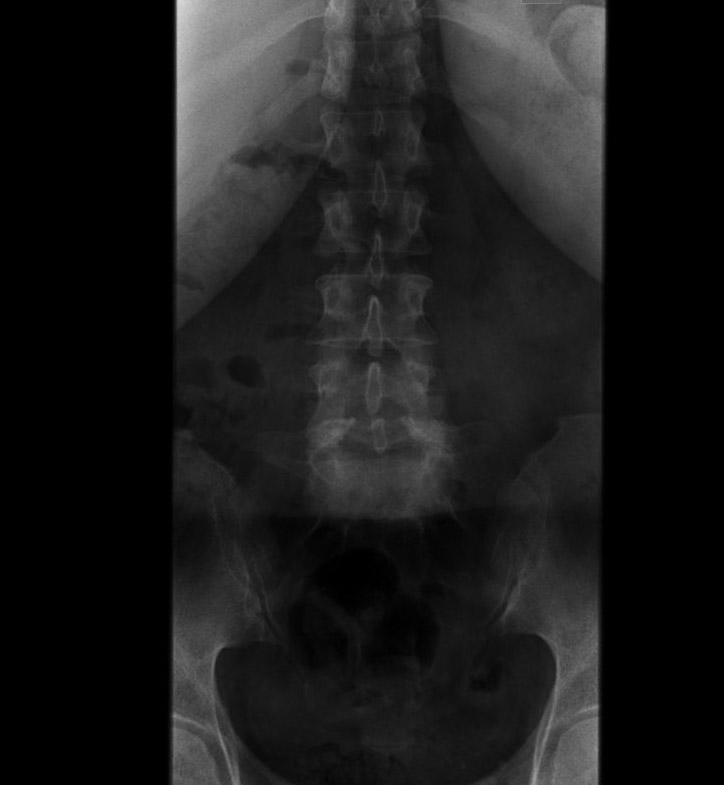 |
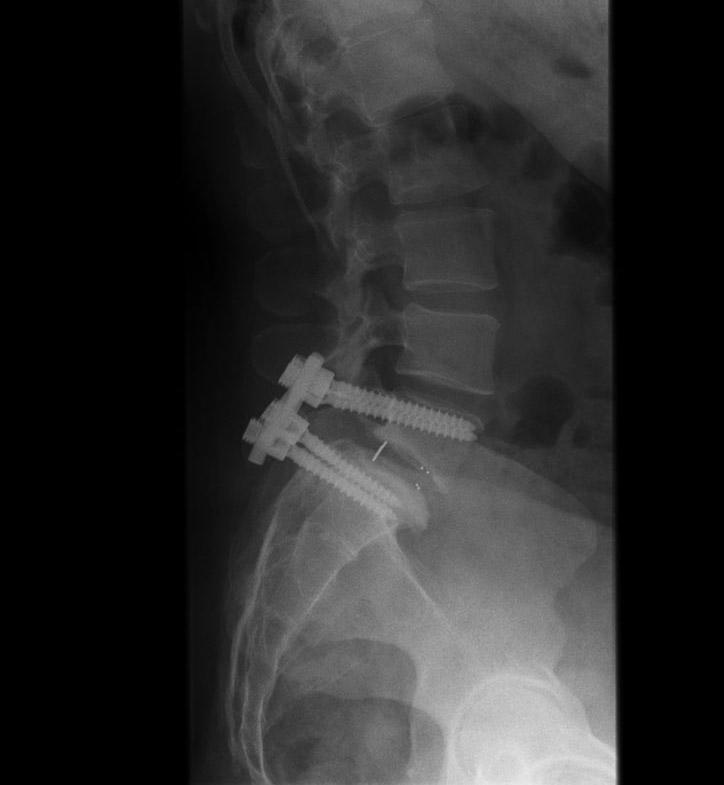 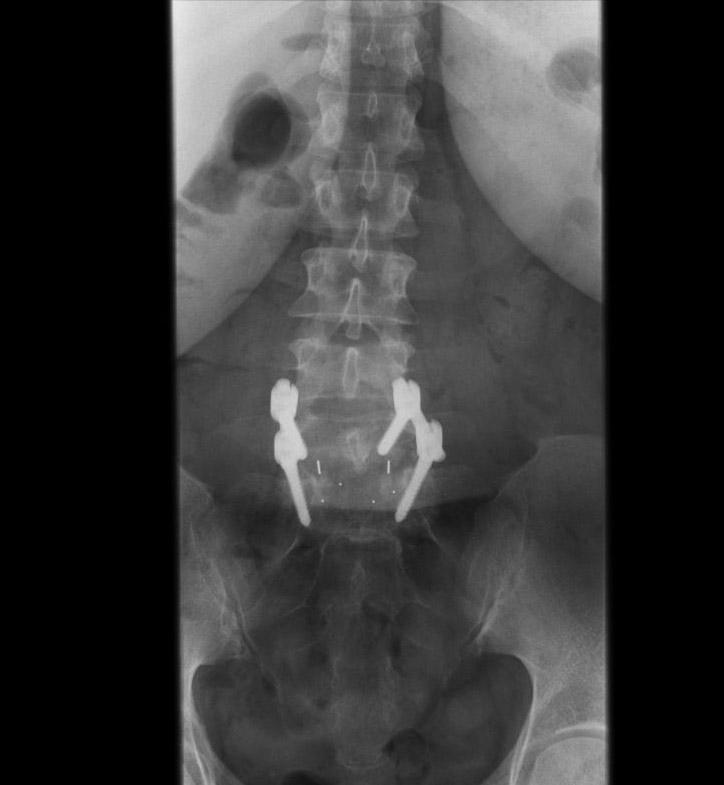 |
| Sliding vertebrae L5/S1 before the operation | Situation after successful surgery with reduction. The vertebral bodies are again on top of each other. |
How does the treatment work?
The screws and rods are implanted via an incision at the level of the floor to be operated on in the midline on the back. If no additional anterior stiffening is planned, bone chips may also be removed from the iliac crest in order to attach them to the rear spine in order to achieve additional bony fusion (stiffening).
If the additional anterior support and fusion already mentioned are planned, an incision is usually made on the left lower abdomen. The intervertebral disc is then cleared out and then replaced with a placeholder (bone block, titanium or PEEK cage).
The procedure is performed under general anesthesia and takes about two hours. You can walk on your own two hours after the operation and you can return home on the third day after the operation.
What aftercare is required?
It is necessary to wear an individually fitted corset for approximately six weeks, after which it is advisable to start physiotherapy tailored to your individual needs under the supervision of a physiotherapist.
When can you do sports again?
You should be able to swim or cycle regularly again about twelve weeks after the procedure. You can gradually resume your usual sporting training around nine to six months after the procedure.
When are you able to work again?
After six weeks you can resume office work and light physical work. You should avoid heavy physical activity for the first eight weeks and then slowly increase it.
What is the success rate?
The international literature reports success rates of over 85 percent.
